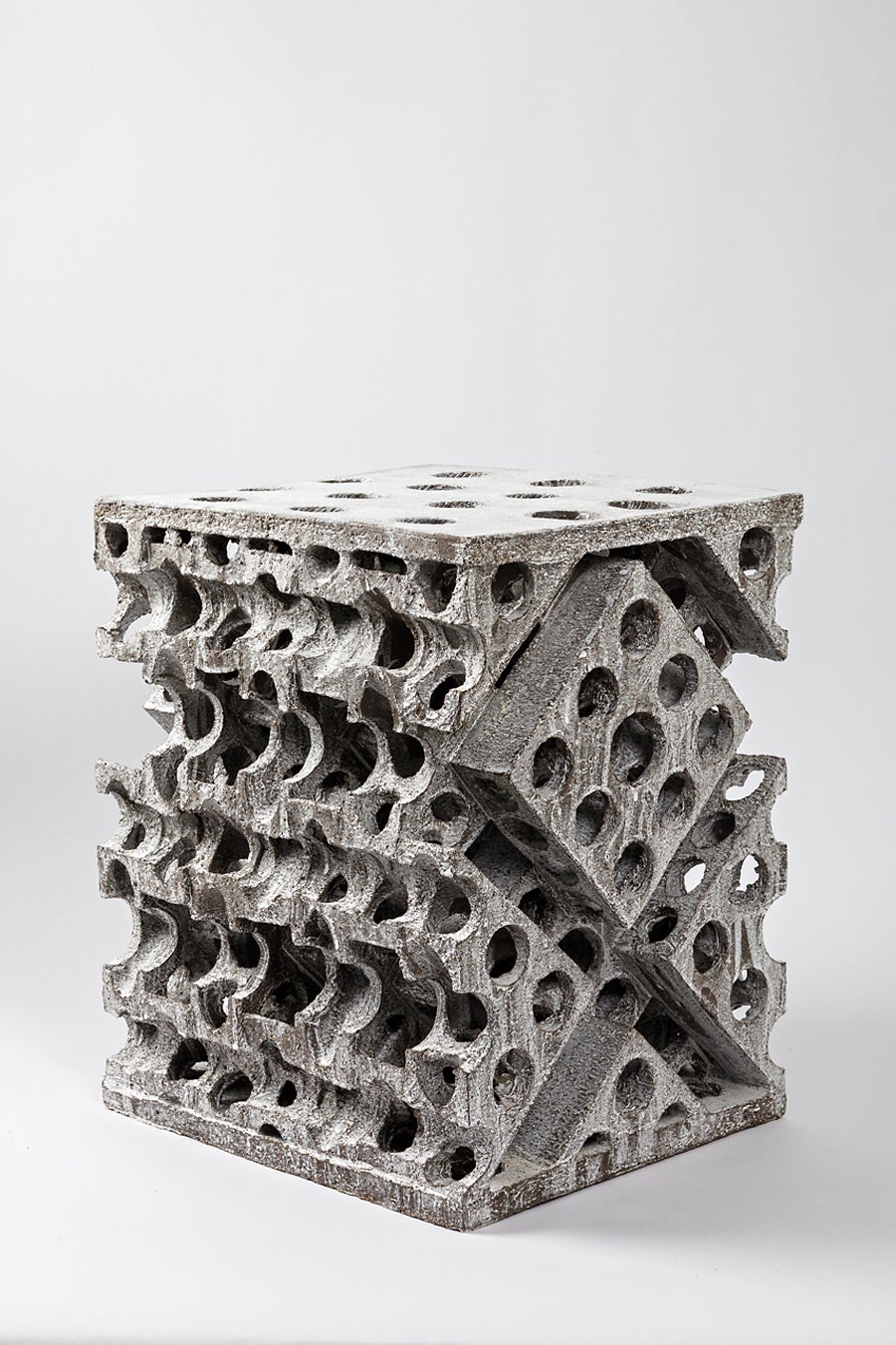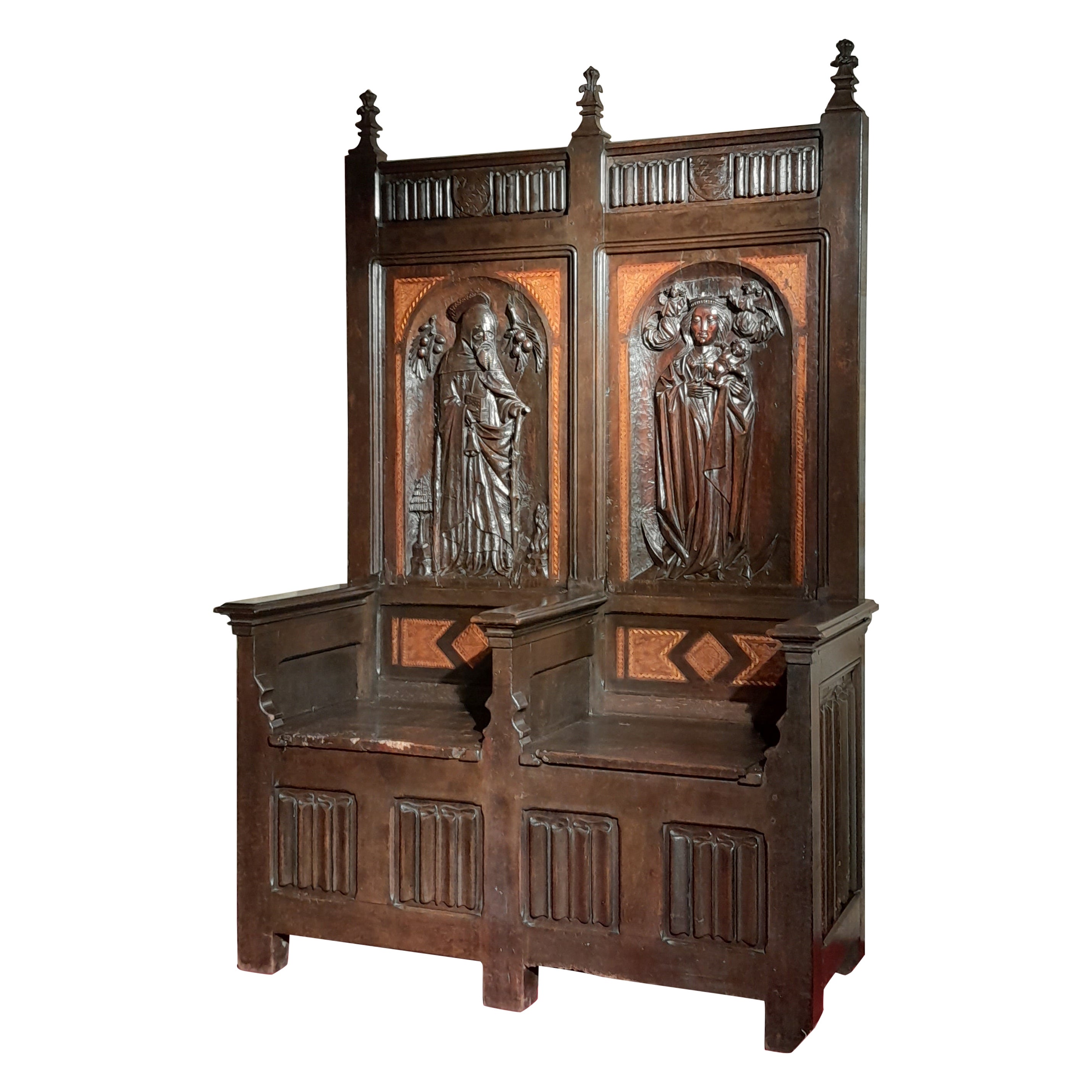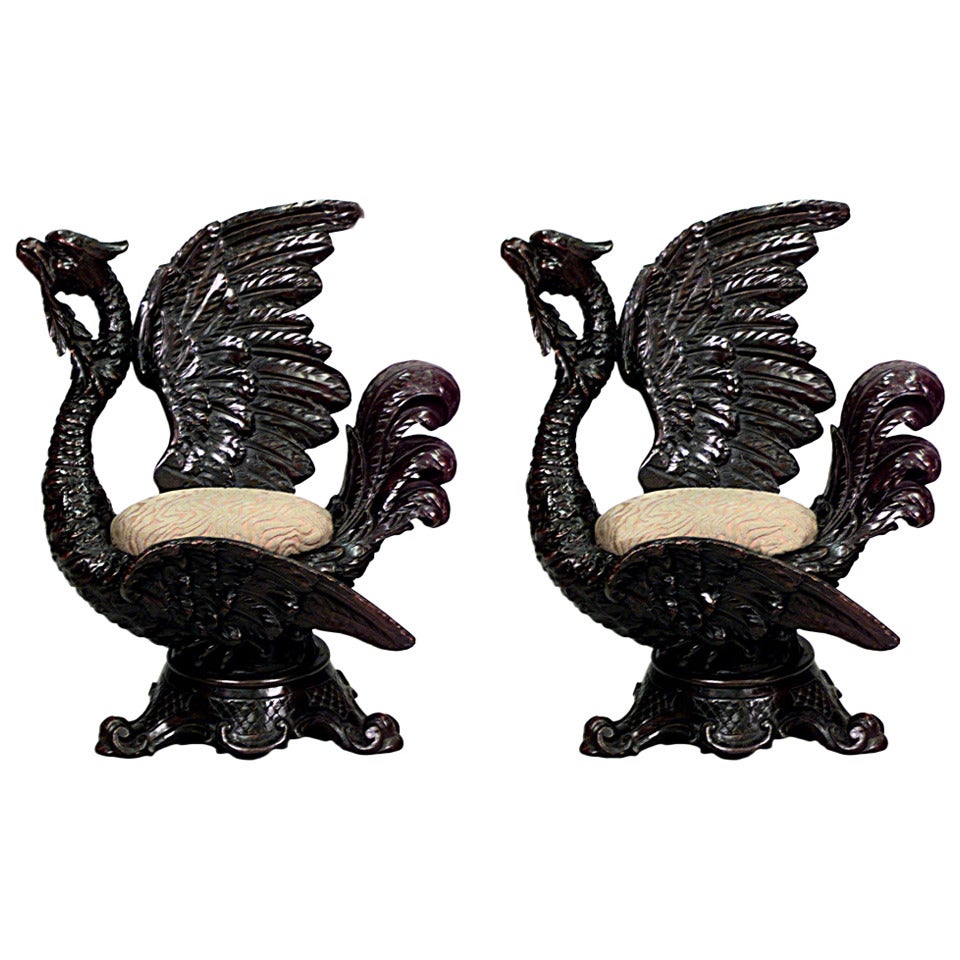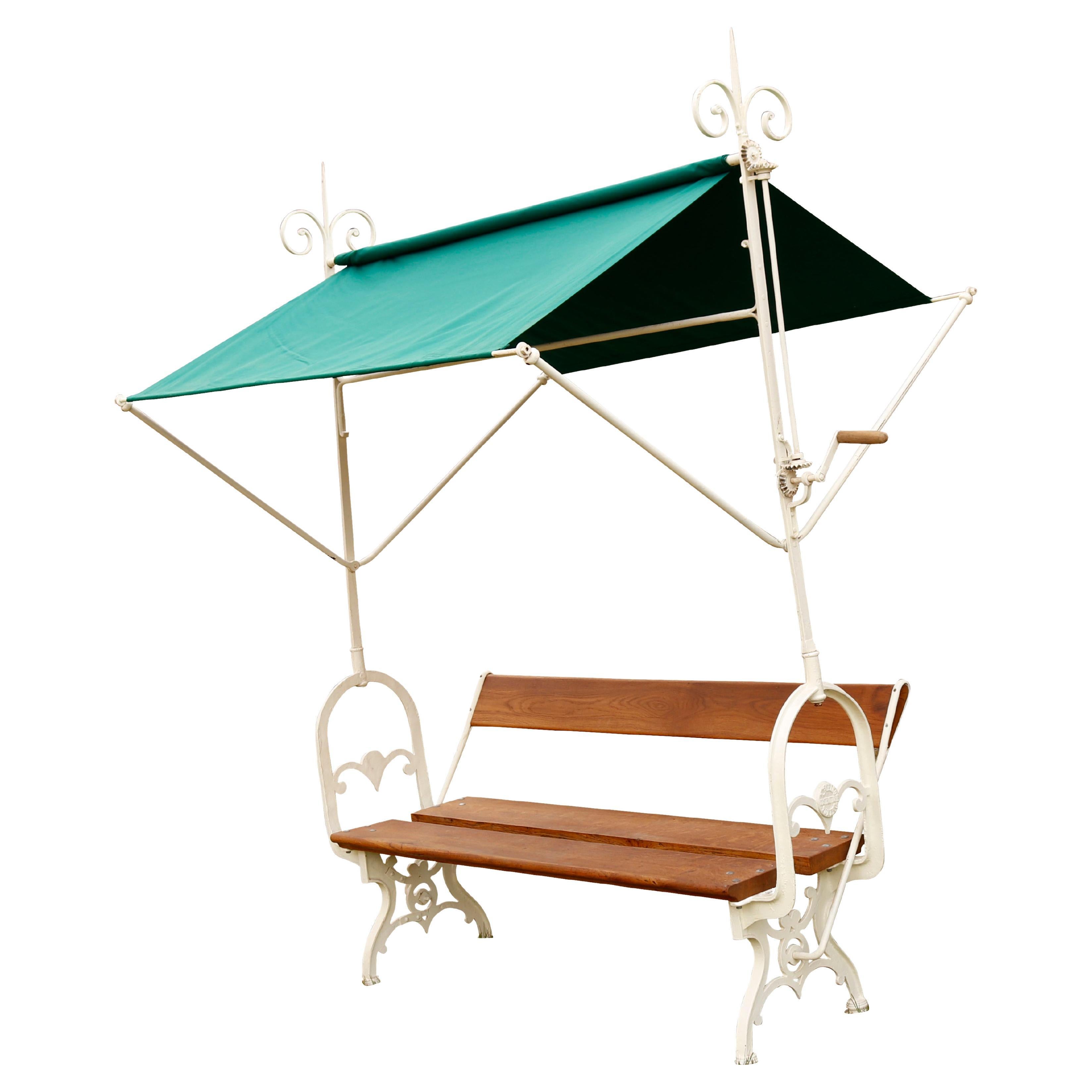Items Similar to Northern Italy Renaissance Cathedra with a Canopy
Want more images or videos?
Request additional images or videos from the seller
1 of 6
Northern Italy Renaissance Cathedra with a Canopy
About the Item
This cathedra or chayère chair is conceived following rules of monumental architecture. The seat can be lift open to reveal a chest. Both curved arm-rests are supported by a baluster. The high back-rest is framed by two grooved pilasters. In its centre appears a coat-of-arms above a cut-out leather motif.
The slightly overlapping canopy topping the cathedra is supported by two foliated consoles.
- Dimensions:Height: 86.62 in (220 cm)Width: 37.41 in (95 cm)Depth: 17.72 in (45 cm)
- Style:Renaissance (Of the Period)
- Materials and Techniques:
- Place of Origin:
- Period:
- Date of Manufacture:16th Century
- Condition:
- Seller Location:Saint-Ouen, FR
- Reference Number:1stDibs: LU3115327213222

About the Seller
5.0
Vetted Seller
These experienced sellers undergo a comprehensive evaluation by our team of in-house experts.
Established in 2016
1stDibs seller since 2017
151 sales on 1stDibs
Typical response time: 7 hours
- ShippingRetrieving quote...Ships From: Saint-Ouen, France
- Return PolicyThis item cannot be returned.
More From This SellerView All
- Rare Double Cathedra Made from Walnut Wood Sculpted, and Inlaid, Around 1500Located in Saint-Ouen, FRRare double Cathedra made from walnut wood, sculpted, and inlaid, around 1500 Origin: Southern Germany Period: Late 15th Century - Early 16th Century Height: 221cm Width: 146,5cm Depth: 60,4cm Walnut wood and inlaid Good state of conservation Description: This double cathedra in walnut wood was probably intended for an abbey, according to the sculpted decor. This cathedra is made from a symmetrical aspect and is divided into three levels. The bottom level has a base sustained by six feet. In the front, the base is decorated by four sculpted elements flattened with a “napkin fold decoration”. Each of the seat rises, revealing a trunk. The intermediate level in divided by three straight and solid armrests. The lower part of the backrest has two inlaid panels with “tarsia certosina” for geometric patterns. This technique also called “inlay in the mass” consists in digging a cavity in the wood to inlay decorative elements. Those panels are framed with the “tarsia a toppo” technique. The top level is divided in two elements. The top part of the backrest has two panels, where parchment patterns frame two badges. Three pinnacles dominate the summit of the backrest. The center of the backrest is sculpted in a rectangular shape. Inside, there are two niches with biblical characters: Saint Anthony the Great and the Virgin Mary. Saint Anthony the Great: Or Antony the Ermit is a monk considered as the father of the Christian monasticism. Born around 251 in Egypt, he withdraws very early into a spirituel solitude. Divine powers are conferred to Saint Antony thanks to the exorcism of the king of Catalonia’s family. But also, the piglet’s episode, born blind. During the XI century, a hospital Order is founded under the invocation of the saint which makes him a holy thaumaturgist. His iconography appears during this period, often represented as an old man with a bear wearing a hooded bute dress, characteristic of the monks of his order, sign of poverty. Also, wearing a long coat. This bas-relief takes back all its usual attributes. - The tau: holding in his left hand, which serves as an abbot’s crook. Also embroidered on his coat. - The bell: hanging from his right hand, also known as hermits’ attribute, used to repel demons. - The book of “la règle des Antonins”: sign of the diffusion of the Faith and the precepts of the Order. - The pig: first, from the piglet’s episode. Then he often is linked to demons, and has another function here: he represents firefighting, coming from the fact that his meat could cure ill people from ergot poisoning. In Italie, he’s known as “Antonio del porco”. - Flames: are associated to the French name of the ergot poisoning (“le feu saint Antoine”: Saint Anthony fire). This attribute is emerging during the XVI century. Furthermore, a nimbus crowns the hermit. The two olive branches symbolize peace. We can see resilience and the pain of the saint who bares the disease of humanity. The Virgin of the Apocalypse: Saint Antony is looking at the Woman of the Apocalypse. This biblical character appears in the twelfth chapter, described by Saint John. Theologians have recognized the appearance of the Virgin even though there are differences for this identification. As a matter of facts, to some, this figure could be the New Eve holding the New Adam in her arms. Other iconographic representations, such as the Immaculate Conception or the Assumption, use the Woman of the Apocalypse attributes. In fact, the Virgin is crowned by angels, holding the Christ. This representation of the Virgin of the Apocalypse is being formed during the Middle Ages and the Renaissance. This iconography takes it rises during the XVI century. In our cathedra, the Virgin is standing up, wrapped in a long flowing drape falling down her feet. The collar of her tunic is decorated with embroidery and brocades. Mary is wearing her hair down, framing a calm and benevolent face, looking down. Two angels are crowning her, with gemstones. She seems to be holding a Christ gesticulating. The baby Jesus hangs on Mary’s neck. Finally, the Virgin is resting on a moon cross. The moon symbolizes the frontier between the incorruptible world and the corruptible one, which in the ancient tradition, used to be under the moon. And so, the Virgin seems incorruptible. Literature • RÉAU, Louis, Iconographie de l’Art Chrétien...Category
Antique 16th Century Armchairs
MaterialsWood, Walnut
- Renaissance Cathedra with Perspective MotifLocated in Saint-Ouen, FRRENAISSANCE CHAYÈRE WITH PERSPECTIVE MOTIF ORIGIN: FRANCE, LYON ÉPOQUE: FIRST HALF OF THE XVI CENTURY Height: 166cm Width: 74cm Depth: 47cm Walnut wood From: Château de Quintin’...Category
Antique 16th Century Office Chairs and Desk Chairs
MaterialsWalnut
- Renaissance "Chayère" ChairLocated in Saint-Ouen, FRThis chayère chair of beautiful proportions stands on a rectangular box base enriched by vermiculure motifs executed in flat-plane. This base is topped by a moulding of strong gadroo...Category
Antique 16th Century French Renaissance Armchairs
MaterialsWalnut
- Rare Renaissance Caquetoire with a Perspective motif from LyonLocated in Saint-Ouen, FRThe trapezoidal armchair is a typically French creation from the second half of the sixteenth century. Although the nineteenth century gave it the name of "caquetoire", it was descri...Category
Antique 16th Century French Renaissance Armchairs
MaterialsWood, Walnut
- 17th Century Italian Armchair with PlumageLocated in Saint-Ouen, FRThe straight uprights of the backrest are surmounted by gilded plumages. Gilded acanthus leaves in the form of consoles adorn the top of the two front legs, supporting the large flat...Category
Antique 17th Century Italian Renaissance Armchairs
MaterialsFabric, Walnut
- Beautiful Renaissance Walnut ArmchairLocated in Saint-Ouen, FRBeautiful Renaissance walnut armchair. Origin: Italy. Period: 16th Century. Dimensions: height: 110 cm. length: 66 cm. depth: 50 cm. Material: walnut wood. leather t...Category
Antique 16th Century Armchairs
MaterialsLeather, Walnut
You May Also Like
- 19th c., Renaissance Style, Northern Italian ChairsLocated in Newport Beach, CAPair of richly hand-carved armchairs with faces and foliate details. Covered in apple-green, Coraggio fabric.Category
Antique 19th Century Italian Renaissance Armchairs
MaterialsWalnut, Silk
- Pair of Northern Italian Renaissance Griffin Side ChairsLocated in New York, NYPair of Northern Italian Renaissance style (19th Cent) walnut carved griffin shaped low side chairs with oval faux snake-skin seatCategory
Antique 19th Century Renaissance Side Chairs
MaterialsVelvet, Walnut
- Cathedra or Throne Chair, Late 16th Century, French Second Renaissance, WalnutLocated in BUNGAY, SUFFOLKA moulded cornice sits above the high, panelled back with fluting and applied roundels. The later, metal pin on the left edge releases the central, moulded panel in the back which retains its original hinges. When the pin is removed the panel can be lowered, revealing a large area behind. The scroll arms are supported by tapering turnings which can be compared with mid-16th century benches of the nave such as those in the churches in Gerberoy and Coivrel which are in Oise, the Piccardie region of Frances. The panelled, box seat has later 18th century hinges...Category
Antique 16th Century French Renaissance Armchairs
MaterialsWalnut
- Antique Italian Garden Bench with a Green CanopyLocated in Wormelow, HerefordshireA very rare Italian garden bench with an adjustable canvas canopy and reversible back rest. nk.Category
Antique Late 19th Century Benches
MaterialsWrought Iron
- 19th Century French Canopy Hall Bench Large Renaissance Cathedral Carved OakLocated in Shreveport, LA19th Century French canopy hall bench large Renaissance cathedral carved oak. Direct from a cathedral in Antwerp, this superb, highly carved canopied bench...Category
Antique Late 19th Century French Renaissance Benches
MaterialsOak
- Italian Renaissance Oak Foot StoolLocated in New York, NY2 Italian Renaissance style oak rectangular foot stools with cane seat (priced each) (20th Cent.).Category
20th Century French Renaissance Benches
MaterialsOak
Recently Viewed
View AllMore Ways To Browse
Cut Out Leather
Italian Renaissance Frame
Italian High Renaissance
Renaissance Seat
Console With Seating
Walnut 16th
16th Century Walnut
Italian Renaissance Architecture
Antique High Back Arm Chairs
Antique High Back Arm Chair
Chest With Seat
16th Century Italian Walnut
Antique Brown Leather Arm Chair
Monumental Console
Renaissance Arm
Cut Out Armchair
Italian Pilaster
Northern Italian Chest





